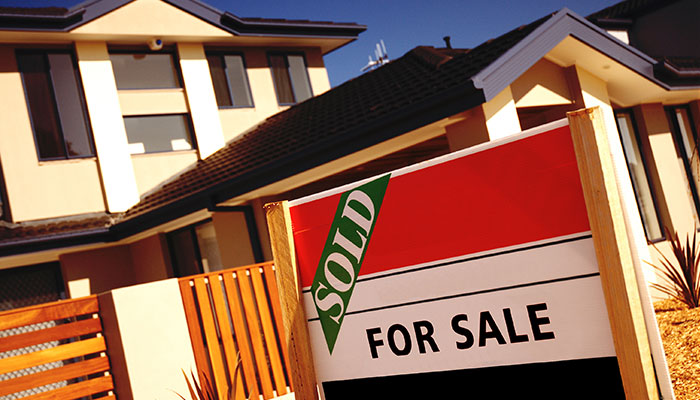Australian property prices have been under pressure since the COVID-19 pandemic hit, but so far the relevant barometers appear to be pointing to a soft landing.

Market fall: In May, many houses were sold at a significant discount to those offloaded in the pre-pandemic period.
Regardless, there is little doubt that with rising unemployment, a recession, renewed lockdown efforts and lower migration, downward pressure will remain on the property market.
Property markets are typically much slower to react to economic shocks, but many experts suggest that house prices will actually fall quite significantly over the next 12 months.
However, there seems to be a price disconnect between what the official property data is saying about recent home sales and the underlying state of the market. It is likely that Sydney house prices have already dropped more substantially than the public has been led to believe.
Vendors and real estate agents have significantly reduced the reporting of sales results for houses and apartments in many suburbs.
It appears that many recent house sales are not being reported and prices are initially being withheld. While this may be due to a variety of factors such as privacy concerns, another common reason is that the sale is below expectations. As property indices are lagging indicators, they are not painting an accurate picture of the current state of the property market.
Sydney home sale price records from auctions held in May 2020 suggest that those houses where sales prices were originally kept from the public on average sold around 8 per cent below their valuation. This means that in May many houses were sold at a significant discount to those offloaded in the pre-pandemic period.
Currently, it is very difficult to find out what has really been happening to the Sydney property market since the start of the COVID-19 crisis. Vendors and real estate agents have significantly reduced the reporting of sales results for houses and apartments in many suburbs.
Big drop in reporting of results
Figures sourced from realestate.com.au show that the average number of reported auction results was 76 per cent in the October to November 2019 period. But since Apirl 2020, only 50 per cent of sales data is being made public. The figures show that in comparison to the second half of 2019, auction results or sales are now far less likely to be revealed.

Grey area: Professor Stefan Trueck says we do not have an accurate picture of the current state of the property market.
For example, in the northern Sydney suburb of Lane Cove, about 60 properties have been sold since the beginning of May 2020, according to realestate.com.au. However, prices for less than 10 of those sales have been made public. This scenario plays out across many other suburbs in Sydney.
By comparing actual sales prices from successful auctions against their estimated prices from valuation models, market watchers are able to gain a better understanding of the true state of the Sydney property market.
- Please explain: what is cabin fever?
- World-first findings pinpoint where and when sharks more likely to attack
Valuations for almost all properties in Sydney can be obtained from the professional provider CoreLogic -- the main provider on information about property transactions and prices in Australia -- or for free from realestateview.com.au.
By using this data, it can be inferred that for auctions held in May 2020, the average reported sale result for houses has been approximately 3 per cent lower than that predicted by the valuation models.
Sales prices point to 8 per cent fall
The withholding of auction results often occurs when vendors or real estate agents are not pleased with the result and the sale price falls below expectations.
Although these transaction prices can be withheld initially, in subsequent weeks the auction prices are eventually made public when they are reported to the NSW Land Registry Services.
This suggests that typically unfavourable price outcomes are more likely to not be reported by vendors or real estate agents.
An analysis of the difference between these sales prices and the valuation models reveals that on average in May 2020, sales prices for Sydney houses were around 8 per cent below the pre-sale valuation estimates of these properties. This suggests that typically unfavourable price outcomes are more likely to not be reported by vendors or real estate agents.
These results also point towards a drop in Sydney house prices that exceeds the numbers reported. Interestingly, due to the low sales volume and the small number of reported sales, CoreLogic had temporarily stopped publishing its Daily Home Value Index in May and June.
CoreLogic head of research Tim Lawless said this was a cautionary move to avoid volatility in the price series when sales observations had fallen substantially. The index is now available again and for Sydney property prices it is approximately 2 per cent below its value at the end of April 2020.
With a renewed outbreak of coronavirus, market watchers are expecting a continual softening of property prices. It may well be worth watching the CoreLogic index in coming weeks and months as it is likely to fall further and more significantly when additional recent sale prices are revealed.
Stefan Trueck is Professor of Business Analytics at Macquarie Business School and is a Co-Director of the Centre for Risk Analytics.



